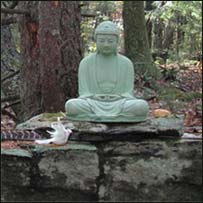|
|
 |
Please support Dharma Seed with a 2025 year-end gift.
Your donations allow us to offer these teachings online to all.

|

|

|
The greatest gift is the
gift of the teachings
|
|

|
| |
|
Dharma Talks
|
2008-08-12
Fourth Morning Instructions
18:46
|
|
Rob Burbea
|
|
|
As we learn to develop concentration in meditation, samatha (calm, tranquility) is also developed, and together these qualities become a powerful means for deep insight and a source of profound well-being. This progressive series of talks, guided meditations and instructions explores in some detail the art of concentration, primarily through different ways of working with the breath and the body to open to deeper and deeper levels of calmness, presence and joy.
|
|
Gaia House
:
The Art Of Concentration (Samatha Meditation)
|
|
|
2008-08-11
Talk Four: Jhanas One to Four
64:43
|
|
Rob Burbea
|
|
|
As we learn to develop concentration in meditation, samatha (calm, tranquility) is also developed, and together these qualities become a powerful means for deep insight and a source of profound well-being. This progressive series of talks, guided meditations and instructions explores in some detail the art of concentration, primarily through different ways of working with the breath and the body to open to deeper and deeper levels of calmness, presence and joy.
|
|
Gaia House
:
The Art Of Concentration (Samatha Meditation)
|
|
|
2008-08-11
Third Morning Instructions
18:42
|
|
Rob Burbea
|
|
|
As we learn to develop concentration in meditation, samatha (calm, tranquility) is also developed, and together these qualities become a powerful means for deep insight and a source of profound well-being. This progressive series of talks, guided meditations and instructions explores in some detail the art of concentration, primarily through different ways of working with the breath and the body to open to deeper and deeper levels of calmness, presence and joy.
|
|
Gaia House
:
The Art Of Concentration (Samatha Meditation)
|
|
|
|
|